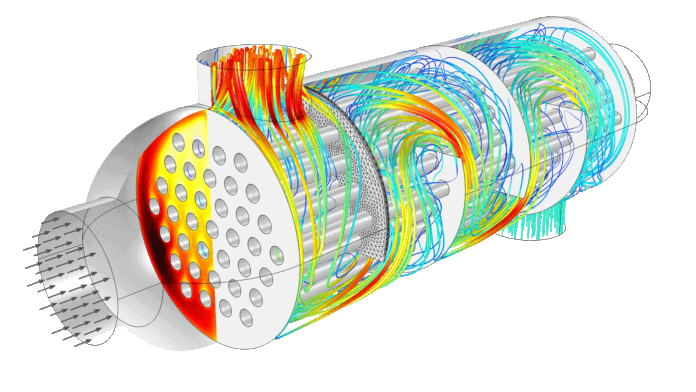In the world of industrial processes, HVAC systems, and various applications requiring heat transfer, the role of heat exchangers is paramount. These ingenious devices facilitate the efficient exchange of thermal energy between two fluids, often at different temperatures. With advancements in technology, a wide array of heat exchangers has emerged, each tailored to specific needs and industries.
In this blog post, we delve into the realm of efficient heat exchangers, unveiling top picks that have redefined heat management and thermal efficiency.
Plate heat exchangers
In today’s world, where efficient use of resources is crucial, plate heat exchangers are emerging as the solution to the inefficient and resource-intensive heat exchange methods of the past.
These devices are designed to keep up with the modern-day demand for compactness, versatility, and high efficiency that has become synonymous with progress. With a series of stacked plates that provide multiple flow channels for the two fluids, plate heat exchangers rapidly transfer heat between them, making them the number one choice for various applications.
Moreover, their compact design and ability to handle wide-ranging fluid viscosities make them ideal for industrial and commercial applications where space and flexibility are essential. With plate heat exchangers spearheading the efficient heat exchange revolution, there is hope for a greener and more sustainable future.
Shell and tube heat exchangers
When it comes to heat exchange, Shell and tube heat exchangers are the go-to solution. These exchangers use a genius design that ensures efficient transfer of heat, even in some of the harshest environments. With a shell that contains an array of tubes within, shell and tube heat exchangers are capable of handling a wide range of applications, from chemical processing to power generation.
They are simply the workhorses of the heat exchange world, providing reliable, adaptable, and efficient heat transfer where it matters most. It’s no wonder that these exchangers have become essential tools for industries looking to optimize their processes while minimizing costs.
Brazed plate heat exchangers
When it comes to efficient heat transfer, brazed plate heat exchangers are the reigning champion. These exchangers are comprised of multiple plates that are brazed together, creating a package that is not only space-efficient but also durable and leak-free. Unlike traditional heat exchangers, brazed plate heat exchangers eliminate the need for gaskets and fittings, simplifying the design and ensuring hassle-free operation.
They are also capable of handling high pressures and temperatures, making them a popular choice across industries. With their compactness and efficiency, it’s no surprise that brazed plate heat exchangers are the go-to solution for those in search of optimal heat transfer.
Air-to-air heat exchangers
Maintaining a comfortable indoor climate isn’t just about keeping your thermostat at the perfect temperature; it’s about finding ways to reduce your energy usage without sacrificing your comfort. That’s where air-to-air heat exchangers come in. These innovative systems harness the heat from your exhaust air and use it to pre-condition the incoming air, drastically reducing the amount of energy needed to keep your indoor environment at the perfect temperature.
By investing in an air-to-air heat exchanger as part of your HVAC system, you’ll not only save on your energy bills, but you’ll also be doing your part to reduce your carbon footprint and protect the planet for future generations.
Finned tube heat exchangers
Finned tube heat exchangers are known for their ability to amplify heat transfer, thanks to their extended surfaces, or fins. These fins are carefully designed to increase the surface area of the tubes, providing enhanced heat exchange efficiency.
What’s interesting is that edge tension plays a significant role in this process. By properly securing the fins to the tubes, the edge tension helps to optimize performance and ensure that the fins remain in place.
This level of precision is critical in applications where one fluid has a lower heat transfer coefficient, helping to bridge the gap and improve overall efficiency. With such careful attention to detail, it’s no wonder that finned tube heat exchangers remain a crucial component in a wide range of industries.
Conclusion
The world of heat exchangers is teeming with innovation, efficiency, and versatility. The top picks outlined here cater to a range of industries and applications, showcasing the diverse ways in which heat exchange technology has evolved to meet the demands of modern processes. As industries continue to strive for enhanced efficiency and reduced energy consumption, these efficient heat exchangers stand as testaments to the remarkable ways in which engineering and technology can reshape thermal management.
